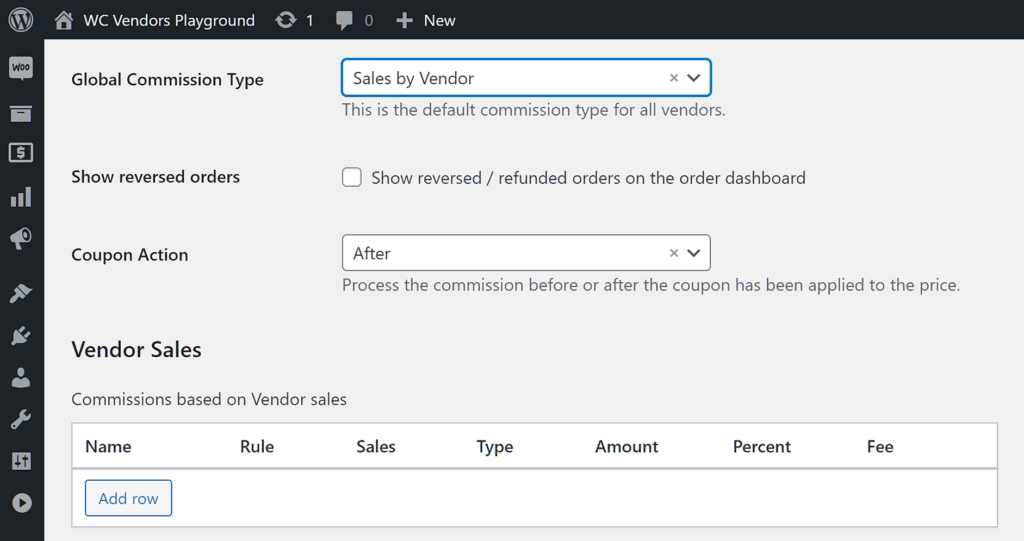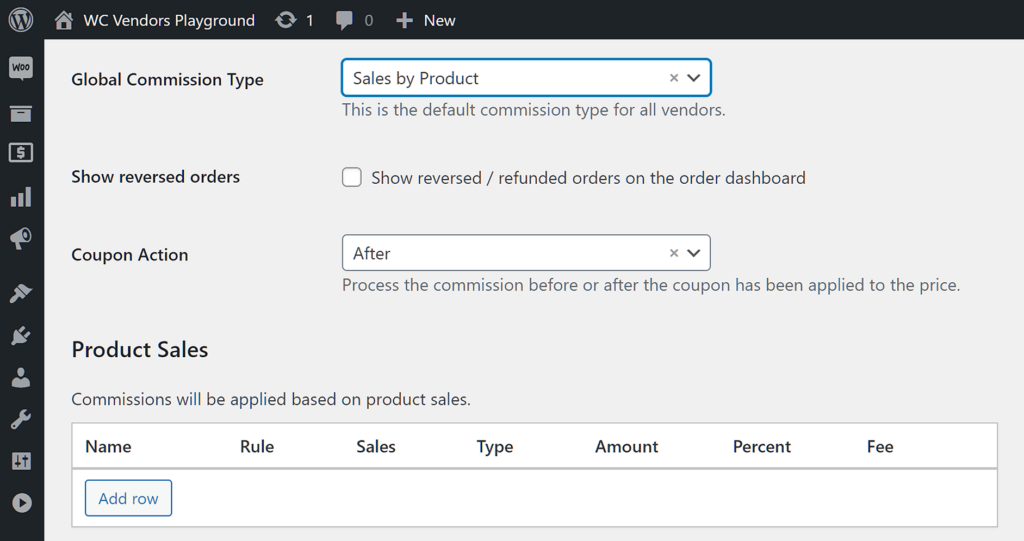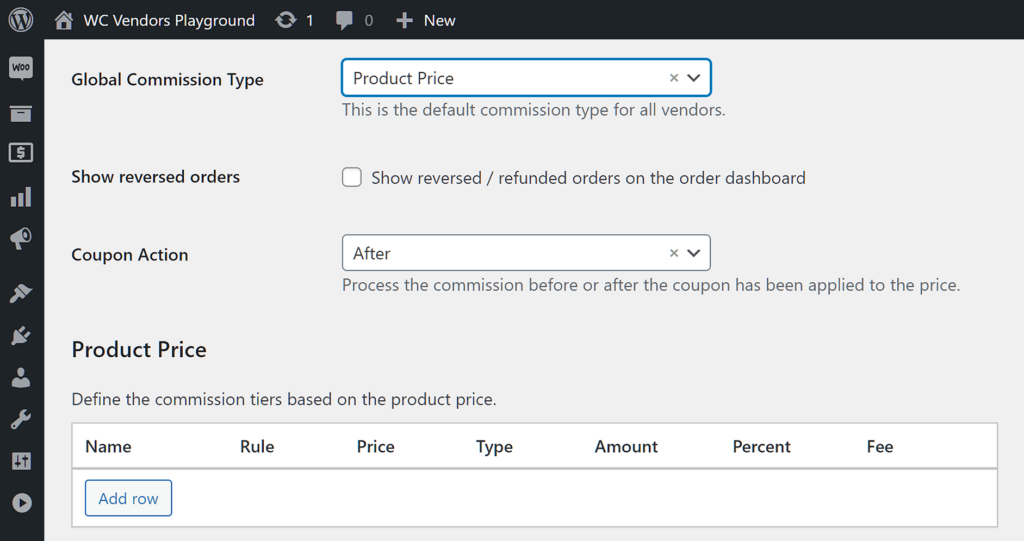
As you likely already know, one of the best ways to pay and charge vendors in your marketplace is via commissions. However, it’s important to recognize that commissions come in various forms. WC Vendors’ Tiered Commission Types, for example, boast complex features granting you a great degree of freedom to customize how your sellers and the marketplace itself earn revenue.
Today, we’ll delve deeper into the four Tiered Commission Types available on WC Vendors, outlining their advantages, disadvantages, and practical uses. By doing so, we hope to help you identify the most suitable option for your e-commerce venture.
So let’s get cracking!
What Are Commissions?
A commission is the fee that vendors receive for each sale they make on a platform. In simpler terms, when a vendor sells something on your multi-vendor marketplace, they earn a commission from the total sale amount before you take the rest for yourself.
Let’s say a vendor sells a product worth $200. If you set the commission to 80%, then you award the vendor $160 before charging them the remaining $40.
The commission rate varies based on your marketplace and the products sold. It can also differ for individual vendors or product categories.

WC Vendors Commission Types
WC Vendors’ advanced commission system features 7 commission types, each one allowing you to control how you pay and charge your vendors. As illustrated below, the first 4 are called Standard Commission Types, while the last 3 are known as Tiered Commission Types:
Standard Commission Types:
- Fixed
- Fixed + fee
- Percentage
- Percentage + fee
Tiered Commission Types:
We previously discussed what Standard Commission Types are. This time, we’ll scrutinize Tiered Commission Types.
Tiered Commission Types
Tiered Commission Types offer advanced ways to pay and charge your vendors. And when used strategically, they can even boost your marketplace’s profits.
Each of the four Tiered Commission Types allows you to establish various levels of commission rates. This means you can design a system where vendors earn higher commission rates based on what or how much they sell. In other words, this setup motivates vendors to perform optimally so that they can access the best commission rates your marketplace offers.
When you opt for a Tiered Commission Type, WC Vendors generates a table where you can add different commission tiers. Adding a new tier is as simple as clicking the Add Row button, and removing one is done by clicking the X button next to it.
Each Tiered Commission Type allows you to use any of the Standard Commission Types for each tier. Additionally, you can define the rules that govern the behavior of each tier.
With these points in mind, let’s delve into the three Tiered Commission Types!
1. Sales by Vendor
The Sales by Vendor commission type enables you to establish different commission rates depending on the total number of products a vendor has sold from their entire catalog since they joined your marketplace.
For example, you can create three tiers, each based on the total number of sales a vendor can make.
In the scenario above, selling over 1,000 products qualifies vendors for the Bronze tier, entitling them to a commission rate of 60% for each sale. If they surpass 2,000 products sold, they move up to the Silver tier, where they earn a higher commission rate of 70%. Finally, selling over 5,000 products grants them access to the Gold tier, where they enjoy an 80% commission rate.
Benefits
- Customizable incentive structure: With this Tiered Commission Type, you can set up different commission rates based on the total sales of each vendor since they joined your marketplace. This allows you to create a tailored incentive structure that encourages vendors to increase their sales volume.
- Encourages vendor performance: What happens when you offer higher commission rates for vendors who achieve certain sales milestones? Basically, you motivate them to perform well and strive for higher sales numbers. This can lead to increased competitiveness among vendors and overall growth for your marketplace.
- Flexibility: This commission type gives you the flexibility to define multiple tiers based on sales volume. Thus, you’re able to reward vendors at different levels based on their performance. This adaptability enables you to adjust your commission structure according to your marketplace’s evolving needs and goals.
Drawbacks
- Complexity: Managing multiple tiers and commission rates based on vendor sales can make your commission structure more complex. It requires careful planning and monitoring to ensure fairness and effectiveness.
- Administrative overhead: Implementing and managing a tiered commission system may require additional administrative effort. This includes tracking vendor sales data and updating commission rates as vendors progress through different tiers.
- Potential discontent: Vendors who are unable to reach higher sales tiers may feel discouraged or dissatisfied with their commission rates. Therefore, it could potentially lead to discontent or turnover among vendors.
Applications
- Rewarding growth: This Tiered Commission Type is ideal for incentivizing vendors to grow their sales over time. By offering increasing commission rates as vendors achieve higher sales milestones, you encourage them to expand their product offerings and attract more customers.
- Promoting fairness: This tiered commission type allows you to establish transparent criteria for commission rates based on vendor performance. As a result, you promote fairness and equity among vendors. Vendors understand the requirements for reaching higher commission tiers, reducing confusion and potential disputes.
- Encouraging engagement: By offering tangible rewards for sales achievements, this Tiered Commission Type encourages vendor engagement and active participation in your marketplace. Vendors are motivated to optimize their sales strategies and customer interactions to maximize their commission earnings.
In short…
The Sales by Vendor Tiered Commission Type lets you set different commission rates based on a vendor’s total sales since joining your marketplace. Vendors progress through tiers as they achieve sales milestones.
This Tiered Commission Type is best used for incentivizing vendors to increase sales volume over time.
2. Sales by Product
With Sales by Product, you can create tiers based on the total sales of each product. In other words, this Tiered Commission Type zeroes in on the number of units of each product sold from the seller’s catalog. This allows you to reward vendors based on the popularity of specific products.
Let’s illustrate this with an example: A vendor is selling a variety of toys, including a plane, ship, and train. You then establish a tier system consisting of three levels:
If the vendor sells more than 100 toy planes, the product qualifies for Level 1, entitling the vendor to a “Fixed” commission of $50 every time they sell a plane. Surpassing 450 toy ship sales places ships in Level 2, where the vendor earns $65 for every ship sold. Finally, selling over 1,000 trains elevates the toy trains to Level 3, allowing the vendor to receive $80 per train sale.
Benefits
- Focused incentives: This Tiered Commission Type allows you to tailor commission rates based on the sales performance of specific products. Thus, you can provide targeted incentives for vendors to prioritize the sale of certain high-demand or high-profit products.
- Product-specific rewards: What happens when you set up tiers based on the total sales of individual products? Basically, you can ensure that vendors are appropriately rewarded for their efforts in promoting and selling particular items. Therefore, you encourage vendors to focus on products with higher sales potential. As a result, you can increase profits for both vendors and the marketplace.
- Dynamic pricing strategy: Implementing tiered commission rates based on product sales lets you dynamically adjust your pricing strategy to reflect the performance of different product categories. This flexibility allows you to respond quickly to market trends and optimize your commission structure for maximum profitability.
Drawbacks
- Complexity: Managing multiple tiers and commission rates based on product sales can overcomplicate your commission structure. It requires careful monitoring of sales data and frequent adjustments to ensure that commission rates remain fair and effective.
- Product variability: The effectiveness of this Tiered Commission Type may vary depending on the diversity and popularity of your marketplace’s products. Items with inconsistent sales patterns or niche markets may not benefit as much from this commission type compared to more universally popular items.
- Vendor discontent: Vendors whose products underperform may feel disadvantaged by the tiered commission structure. This is especially true if they’re unable to reach higher sales tiers. Thus, this system could potentially lead to dissatisfaction or turnover among vendors.
Applications
- Promoting product diversity: By offering rewards for selling a wide range of products, this Tiered Commission Type can encourage vendors to diversify their product offerings. This helps to enrich the marketplace catalog. Furthermore, it can attract a broader audience of customers with diverse preferences.
- Optimizing product placement: By offering higher commission rates for the sale of specific products, you can influence vendors to prioritize the promotion and sale of certain items. This allows you to strategically position products that align with your marketplace goals and drive overall sales growth.
- Maximizing profitability: What happens when you offer increasingly attractive commission rates for achieving sales milestones? Basically, you incentivize vendors to focus on selling high-value products. This can lead to improved profitability for both vendors and the marketplace as a whole.
In short…
With Sales by Product, tiers are based on the total sales per product, rather than a vendor’s entire catalog. Vendors earn higher commissions for selling more of certain products.
This Tiered Commission Type is best for rewarding vendors based on the popularity and performance of specific products.
3. Sales by Product Price
With Sales by Product Price, you can establish tiers based on your vendors’ product prices.
Consider a vendor selling various types of products, ranging from low-cost to premium. To reflect this diversity in pricing, we can create a commission structure with the following tiers:
Products priced between $1 and $50 belong to the “Budget” tier, entitling the vendor to a 60% commission rate for each sale. “Medium Range” items, priced between $51 and $200, offer a 70% commission rate. Lastly, the most expensive “Premium” items, priced between $201 and $500, provide an 80% commission rate.
Benefits
- Aligned incentives: This Tiered Commission Type guarantees that vendors are incentivized appropriately based on the price range of the products they sell. This encourages vendors to focus on selling products within specific price categories. This, in turn, aligns their efforts with the overall pricing strategy of the marketplace.
- Flexible commission structure: What happens when you offer different commission rates for products of varying price ranges? Essentially, you create a flexible commission structure that reflects the value and profitability of different types of products. As a result, you can optimize commission rates to maximize revenue and profitability for both vendors and the marketplace.
- Encourages product diversity: This Tiered Commission Type encourages vendors to offer products across a range of price points. Thus, it promotes diversity within the marketplace catalog. In addition, it ensures that customers have access to products that suit their budget and preferences. Therefore, it can also boost customer satisfaction and retention.
Drawbacks
- Complexity: Managing multiple tiers and commission rates based on product prices can overcomplicate your commission structure. It requires careful monitoring of product prices and frequent adjustments to ensure that commission rates remain fair and effective.
- Price sensitivity: The effectiveness of this Tiered Commission Type may be influenced by price sensitivity among customers. Vendors may prioritize selling products with higher commission rates, potentially neglecting lower-priced products that are still valuable to the marketplace.
- Vendor discontent: Vendors whose products fall into lower-priced tiers may feel disadvantaged by the tiered commission structure. This is especially true if they’re unable to achieve higher commission rates by selling premium-priced products. As a result, this Tiered Commission Type could lead to dissatisfaction or turnover among vendors.
Applications
- Optimizing pricing strategy: This Tiered Commission Type allows you to align commission rates with your marketplace’s pricing strategy. For example, you can offer higher commission rates for premium-priced products. This encourages vendors to focus on selling high-value items that contribute to overall revenue growth.
- Promoting product placement: You can use tiered commission rates to influence vendors to prioritize the promotion and sale of products within specific price ranges. This allows you to strategically position products that align with your marketplace goals and target customer segments.
- Maximizing profitability: By offering increasingly attractive commission rates for premium-priced items, this Tiered Commission Type lets you incentivize vendors to focus on selling products with higher profit margins. This can lead to improved profitability for both vendors and the marketplace as a whole.
In short…
With Sales by Product Price, tiers are based on the price range of products. Higher commission rates are awarded for premium-priced items.
This Tiered Commission Type is best for aligning commission rates with product pricing strategy.
Additional Resources
Want to learn more about commissions? Then check out the following articles, which discuss commissions in extensive detail:
- How To Charge Vendors In Your Marketplace: A WooCommerce Commissions Guide
- Exploring Standard Commission Types: Amazing Benefits And Applications For Marketplaces
- Power And Versatility: The Awesome Benefits Commission Levels Offer Marketplaces
We also invite you to read the Commissions documentation on our Knowledge Base!
Conclusion
WC Vendors’ Tiered Commission Types grant you a significant degree of control over how you and your vendors generate profits. In addition, they boast many benefits, including encouraging vendor performance.
In summary, here are the 3 Tiered Commission Types available on WC Vendors:
Do you have any questions about Tiered Commission Types? Ask away in the comments section below!





